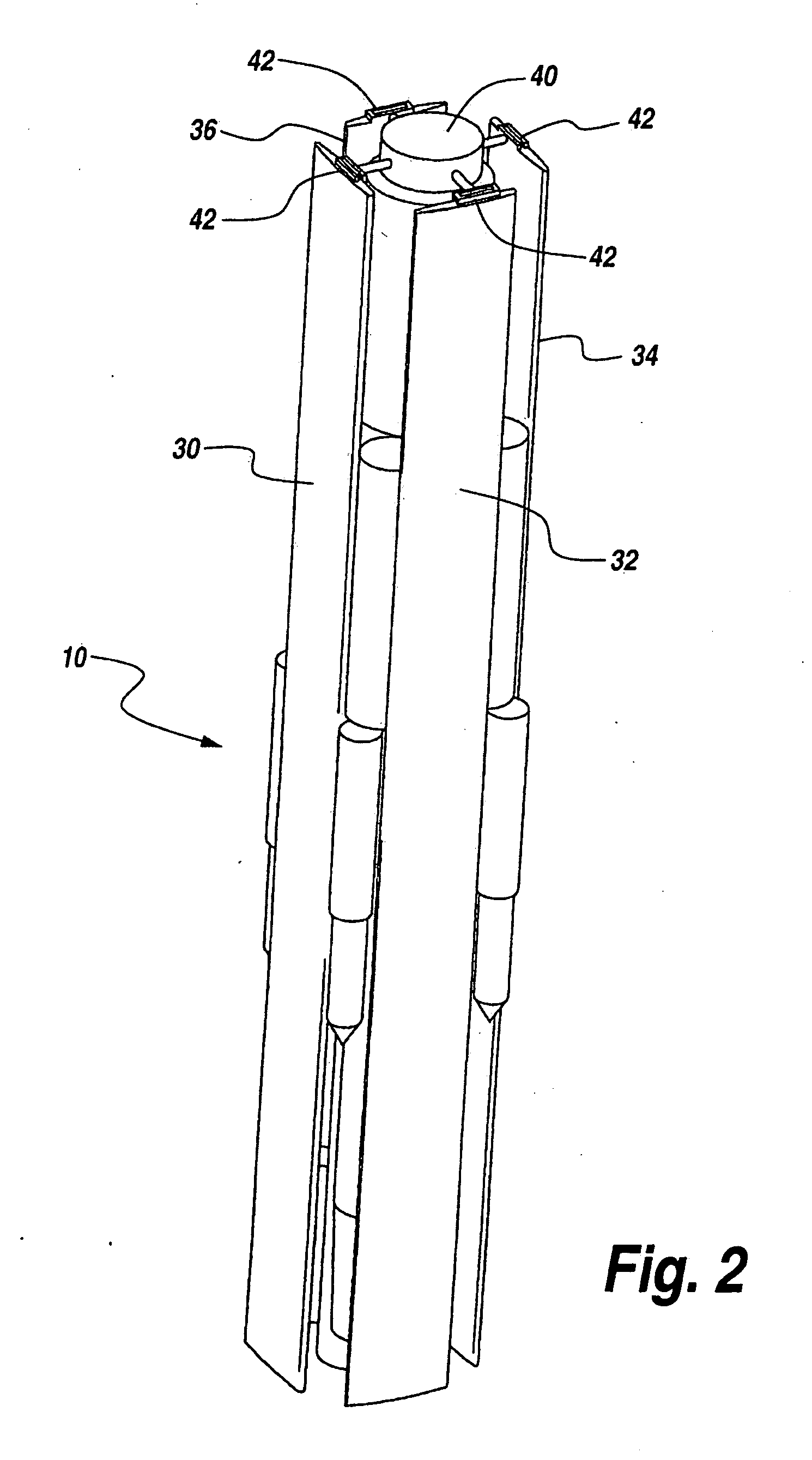Covert sensor emplacement using autorotational delivery mechanism
a technology of autorotational delivery and sensor emplacement, which is applied in the field of astronautics and aerospace, can solve the problems of exposing the payload and the delivery vehicle to unapproved scrutiny, both of these approaches have serious accuracy problems, and the existing systems suffer from accuracy susceptibility
- Summary
- Abstract
- Description
- Claims
- Application Information
AI Technical Summary
Benefits of technology
Problems solved by technology
Method used
Image
Examples
Embodiment Construction
[0029]Referring to FIGS. 1-11, the mechanism of the present invention is a simple modification kit for existing sensors or can be readily incorporated into new sensor payloads to enable heretofore unattainable, precision emplacement of the sensor device at extremely low risk of damage due to high landing loads. The device consists of a guidance and control assembly and mechanical swash plate assembly with attendant rotor blades. The blades are attached in a conventional manner, incorporating a fully articulating hinge. Both cyclic and collective control is provided, enabling a full range of dive speed and directional control to be accommodated. The control is provided via the autogiro navigation and control algorithm hosted in the master processor contained within the electronics module segment of the device. The system navigation approach utilizes GPS techniques with an inertial capability for operation in GPS-denied areas. The blades stow along the longitudinal axis of the payload...
PUM
 Login to View More
Login to View More Abstract
Description
Claims
Application Information
 Login to View More
Login to View More - R&D
- Intellectual Property
- Life Sciences
- Materials
- Tech Scout
- Unparalleled Data Quality
- Higher Quality Content
- 60% Fewer Hallucinations
Browse by: Latest US Patents, China's latest patents, Technical Efficacy Thesaurus, Application Domain, Technology Topic, Popular Technical Reports.
© 2025 PatSnap. All rights reserved.Legal|Privacy policy|Modern Slavery Act Transparency Statement|Sitemap|About US| Contact US: help@patsnap.com



